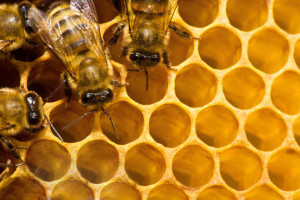 Formally known as photomacrography, macro photography is defined as extreme close-up photography, mostly of very tiny subjects such as insect eyes, dandelion seeds and snowflake. Typically, the size of the subject on the image sensor or negative is greater than life size.
Formally known as photomacrography, macro photography is defined as extreme close-up photography, mostly of very tiny subjects such as insect eyes, dandelion seeds and snowflake. Typically, the size of the subject on the image sensor or negative is greater than life size.
In today’s digital era, macro photographs are defined as photos whose subject has a vertical height of 24 mm or less. Photomacrographs emphasize pattern, texture and intricate details of the subject that cannot be seen with the naked eye and they are typically taken using a lens at its maximum reproduction ratio, which rarely exceeds 1:1.
The reproduction ratio represents the ratio of the subject size on the sensor or film plane to the actual subject size. Reproduction ratios which are greater than 1:1 are known as photomicrography and they can be achieved with the aid of a digital microscope that uses optics as well as a charge-coupled device camera in order to output a digital image to a computer monitor.
Macro Photography Equipment
The most commonly used tools to shoot compelling macro photos are macro lenses with a long barrel that are specifically designed for close-up purposes and which are optimized for reproduction ratios of 1:1 or greater. Small front lens elements are typical of true macro lenses. Higher magnification than life size (up to five times life-size) can be achieved with the aid of diffused macro twin flash and true macro lenses of various focal lengths. Continuously-variable focal length is generally suitable for all macro subjects.
Today, macro photography is much more financially accessible, thanks to the development of technologically advanced small-sensor digital cameras which can outperform any DSLR that has a true macro lens. 35 mm equivalent magnification or equivalent reproduction ratio represents a measure indicating the apparent magnification that is achieved with a crop sensor digital camera or small-sensor format compared to the 35 mm film format.
Macro Photography Tips
When taking macro pictures, the photographer cannot avoid using a narrow depth of field, which in turn may yield pleasant artistic effects, given the fact that the background will appear out of focus completely. If you want to push the boundaries of artistic creativity, experiment with shooting the tiny subject from an unexpected or unusual angle or try wider lens apertures, which will throw the subject more out of focus and may produce visually pleasing results.
One can also experiment with lighting; use side lighting to emphasize texture and front lighting for vividly intense colors. For truly spectacular macro photos, select a rather simple background or natural setting and make sure the subject is composed well within the frame. Also use the quickest shutter speed when shooting macro photos outdoors.
